Four Croatian Scientists Accepted to European Academy of Sciences and Arts
April the 27th, 2023 - Four Croatian scientists were officially accepted to the European Academy of Sciences and Arts at the Festive Plenary Session in Salzburg on April the 15th this year.
The Croatian scientists were Igor Rudan, Emilio Marin and two professors of the Faculty of Medicine in Zagreb - Lidija Beketić Orešković and Stjepan Orešković. The Academy accepted totally 38 members from 11 nations into the circle of new members.
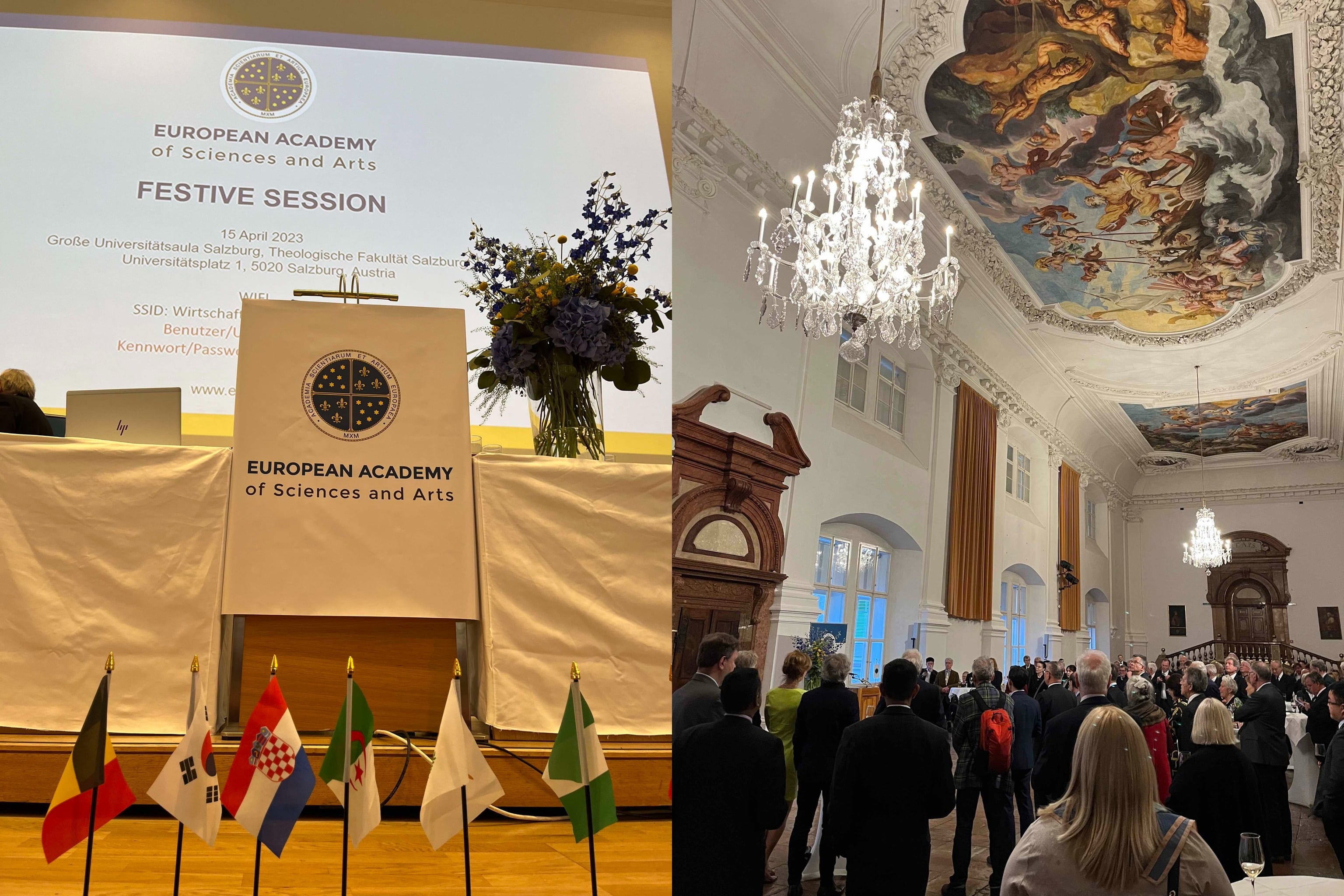
Prof. Ph.D. Stjepan Orešković is the head of the Department of Medical Sociology and Health Economics and former director of the "Andrija Štampar" School of Public Health. Thanks to his contribution to the economics and sociology of health, he was accepted into the social sciences class. Prof. Ph.D. Lidija Beketić Orešković is a doctor at the Clinical Hospital Center Sestre milosrdnice, and was admitted to the Academy based on her exceptional contribution to the field of medicine.
Emilio Marin is professor emeritus of the Croatian Catholic University. From 2011, he was the first full-time professor at the Croatian Catholic University in Zagreb, and from 2012 to 2020, he was vice-rector for international cooperation at that university. He is world famous for his archaeological research.
Igor Rudan is a professor at the University of Edinburgh and head of the Department of International Health and Molecular Medicine. He is joint director of the Center for Global Health Research and the World Health Organization Collaborating Center at the Usher Institute at the University of Edinburgh. He was accepted into the academy based on his contribution to medicine, primarily to reducing the mortality of children worldwide from infectious diseases.
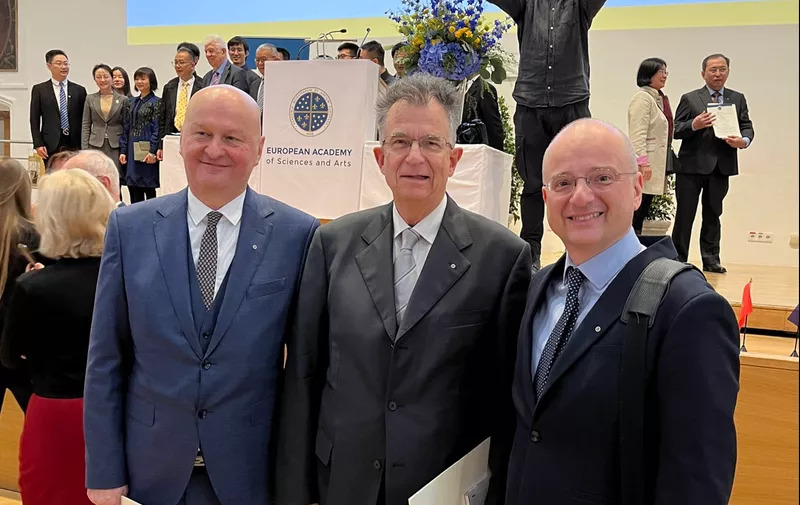

The European Academy of Sciences and Arts (EASA) is a transnational and interdisciplinary network, connecting about 2,000 recommended scientists and artists worldwide, including 37 Nobel Prize laureates. The members of the Academy are chosen on the basis of outstanding scientific, artistic and managerial achievements.
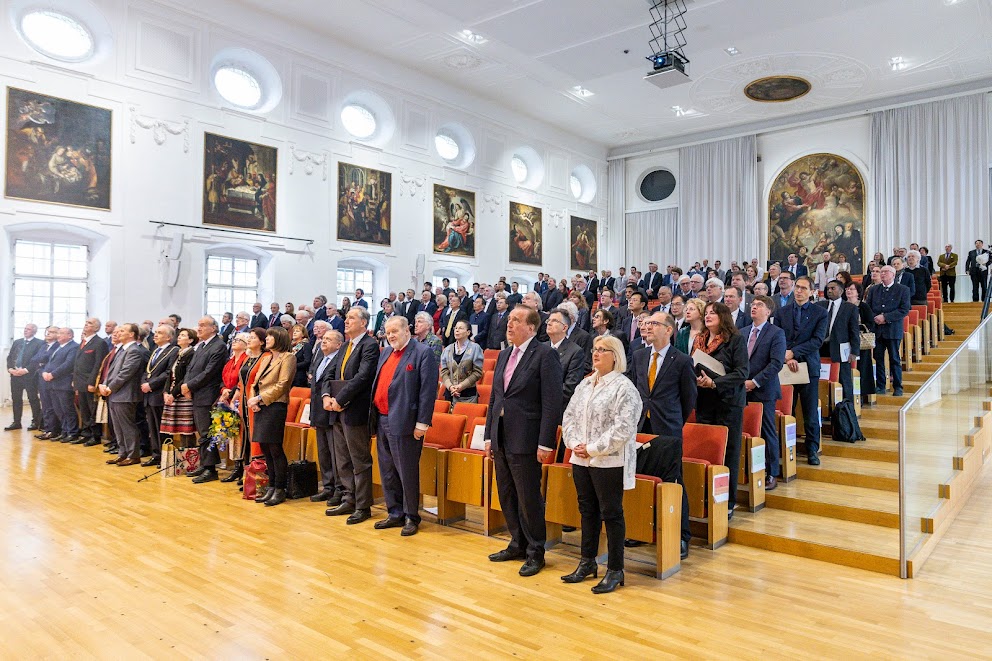
Photos: EASA/wildbild/Facebook
For more, follow our dedicated lifestyle section.
Antibiotics, Vegeta, Lasers: Meet the Legendary Croatian Female Scientists
March 8, 2023 - Gabrijela Kobrehel, Croatian chemist and inventor of Sumamed, an important antibiotic used worldwide, passed away at 83 on Monday, 6 March. On International Women's Day, let us honour her along with Zlata Bartl and Lidija Colombo, all three legendary Croatian female scientists.
From left to right: Gabrijela Kobrehel, Slobodan Dokic, Gorjana Radobolja-Lazarevski and Zrinka Tamburasev
As 24Sata writes, Gabrijela was born in Obedisce in Moslavina. She graduated from the Faculty of Technology in Zagreb and worked at the Pliva Research Institute on chemical transformations of antibiotics, specifically synthesizing new macrolide antibiotics. She published 25 scientific papers and protected over twenty inventions with patents in Croatia and worldwide.
She is the winner of numerous awards, including the "Hero of Chemistry" award, which was presented to her, and posthumously the leader of her team Slobodan Dokic, by the American Chemical Society. Gabrijela Kobrehel, Slobodan Dokic, and Gorjana Radobolja-Lazarevski were the team that discovered azithromycin, the active ingredient of Sumamed.
Sumamed, an antibiotic created in Croatia, is one of the biggest and certainly the most useful Croatian inventions, and it hasn't left its throne for almost 40 years. During the pandemic, many doctors prescribed it to their patients as well.
Zlata Bartl
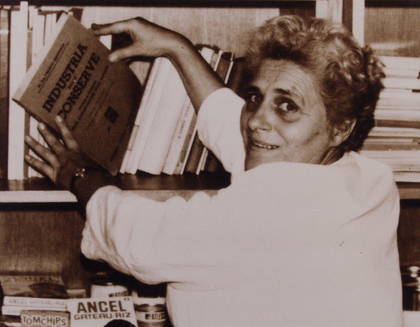
Podravka website
Known in Croatia as Aunt Vegeta, Zlata Bartl changed the fate of the Koprivnica company 64 years ago with her invention of a mixture of different spices.
She was a professor of chemistry, physics, mathematics and meteorology, and then worked as a chemical technician in the laboratory of Podravka. In her work, she has always liked to experiment. After she tried a soup from a bag that a friend brought from France, she herself produced the first bags of Podravka soups.
Not long after that, she took the next step to create a mixture that would not only be used in soups but in many other dishes, and Vegeta was born - a mix of salt and dried carrots, celery, parsley, parsnips and onions.
She received many awards and recognitions for her work, and in 2007 she won the Vecernjak Award for Lifetime Achievement.
Lidija Colombo

Hrcak
One of the most outstanding Croatian scientists of the 20th century secured her place in Croatian history with her work.
After graduating in mathematics and experimental physics at the Faculty of Science and Mathematics in Zagreb, Lidija Colombo started working at the Ruder Boskovic Institute, where she stayed until retirement. As the first woman in Croatia to receive a doctorate in physics, she had a successful career for which she was awarded several times.
In the 1960s, she was a member of the team of physicists at the Ruder Boskovic Institute that constructed the first laser in the then SFRY (Socialist Federal Republic of Yugoslavia), and she is remembered as the founder of the first laboratory for molecular physics in Croatia.
She taught several physics courses and published over forty scientific papers. She edited Matematicko-fizicki List, a mathematics and physics journal, trying to popularise science and involve young collaborators in the paper's work, writes Studentski.
For more, make sure to check out our dedicated Lifestyle section.
Rudjer Boskovic Institute Develops Nanostructures for "Labs on a Chip"
February the 21st, 2023 - The Rudjer Boskovic Institute is no stranger to invention and innovation, and they've now been busy delving into the waters of developing nanostructures for the creation of a "laboratory on a chip".
As Poslovni Dnevnik writes, the remarkable scientists from the Rudjer Boskovic Institute (IRB), in collaboration with colleagues from the University of Zagreb's Faculty of Science and Mathematics (PMF) and the Catalan Institute for Nanoscience and Nanotechnology from Barcelona, have developed nanostructures that could be used in new generation diagnostic devices.
The resulting nanostructures combine exceptional stability with the ability to detect molecules at very low concentrations.
The high technological and industrial demand for higher quality materials and their derivatives led to the development of materials at the nanoscale level. Such materials with improved properties are used in numerous fields, including medicine, ecology, industry, and the list goes on.
The development of sensors and diagnostic devices is moving in the direction of reducing their overall dimensions, with the aim of making the so-called lab on a chip, i.e. small, portable devices that perform tasks for which an entire laboratory used to be required.
Such devices, for example, would enable doctors to conduct various different diagnostic tests when with the patient (usually referred to as point-of-care testing), wherever the patient might be at the time the tests are performed. Small and portable sensors must be long-term stable, regardless of the conditions, and they must also have high sensitivity, in order to ensure the quality of the detection of whatever is being sought at the time.
Therefore, scientists from Zagreb and Barcelona created sensor elements that meet both conditions. The Rudjer Boskovic Institute's talented team consisted of Matej Bubas, Ivana Fabijanic, Vesna Janicki and Jordi Sancho Parramon.
For more, make sure to check out our dedicated news section.
Breakthrough Scientific Discovery at Ruder Boskovic Institute in Croatia
January 12, 2023 - How does the cell build a supporting structure for chromosomes? For years, scientists have been trying to understand how spindle fibers form, which are cellular structures crucial for the proper distribution of chromosomes. A new paper by Croatian researchers from the Ruder Boskovic Institute published in the prestigious journal Nature Communications sheds light on this issue.
Researchers from the team of prof. Dr. Sc. Iva Tolić from the Ruder Boskovic Institute (IRB), in collaboration with colleagues from the Faculty of Science, University of Zagreb (PMF), and Croatian scientists in the diaspora, described how the cooperation of kinetochores and microtubules is crucial in the assembly of the spindle fibers and in determining the movement of chromosomes during cell division, as reported on the Ruder Boskovic Institute's official website.
The scientists reached these results by applying their knowledge of cell biology and theoretical physics and thanks to new approaches and methods of cell microscopy that they developed for this research, which enabled them to study hitherto unseen structures of the spindle fibers in the earliest stages of cell division.
The results, published by this interdisciplinary research team are extremely valuable because they contribute to understanding cell division and the diseases associated with this important process.
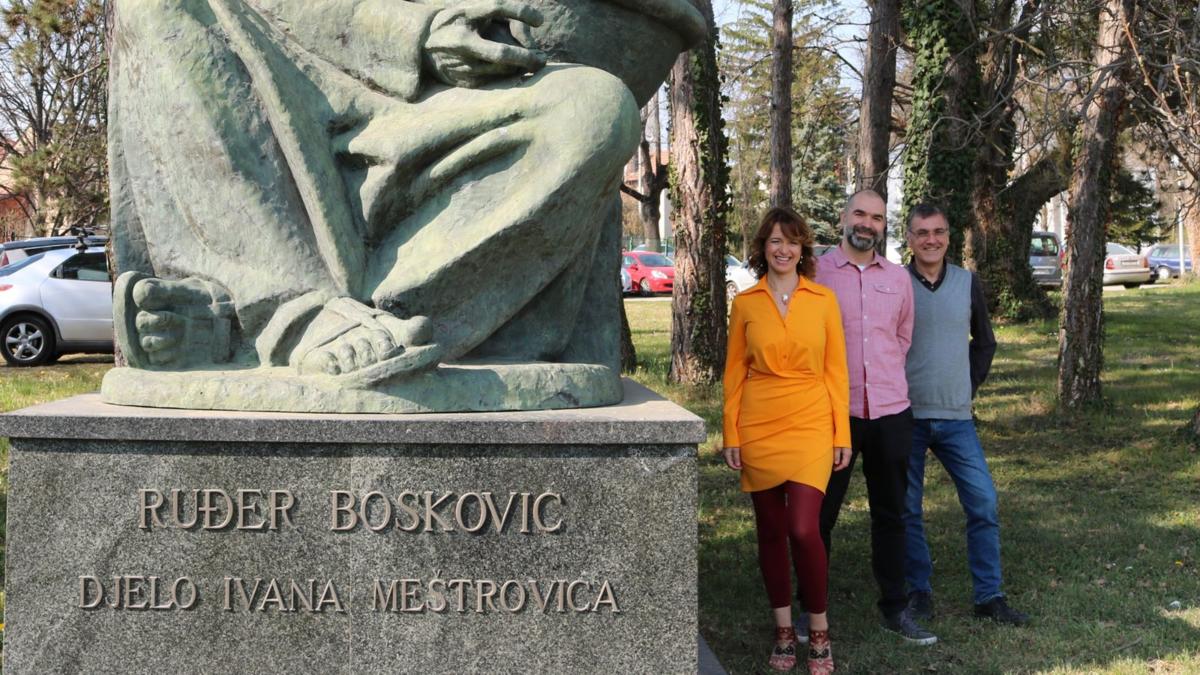
Iva Tolić, Marin Barišić and Nenad Pavin - Ruder Boskovic Institute
How are chromosomes organised during cell division?
Our bodies are made up of about one hundred trillion individual cells created by division from a single cell. Spindle fibers, dynamic micromachines composed of protein tubes - microtubules, are responsible for that division. Although the assembly of the spindle fiber is essential for proper chromosome division, this process has not been fully elucidated due to its complexity.
The spindle fiber has a unique architecture consisting of evenly distributed bundles of microtubules - kinetochore bundles, which are attached to chromosomes, and bridging bundles composed of microtubules, which connect the two poles of the spindle fiber by folding in the middle.
While the formation of kinetochore fibers has long been investigated in many laboratories around the world, how the bridging bundles are assembled has remained unknown. Without these bridging bundles, spindle fibers end in a star shape that cannot separate chromosomes. This is proof that bridging bundles play an indispensable role in cell division.
To clarify the formation of bridging bundles of microtubules, group of Professor Iva Tolić teamed up with the group of Professor Marin Barišić from the Danish Cancer Research Center in Copenhagen and the group of Professor Nenad Pavina from PMF Zagreb as part of the project of the Croatian Science Foundation (HrZZ) under the programme encouraging cooperation with Croatian scientists in the diaspora.
The project was completed with the publication of the results of interdisciplinary research in which, combining cell biology and theoretical physics, the researchers discovered the phase transition of microtubules from a sparse network structure to dense, well-separated, and properly organised bundles of the spindle fibers.
Experiments conducted by student Jurica Matković showed that this transition occurs because motor proteins on kinetochores, which are located in the central part of each chromosome, bind to microtubules.
Binding requires the activation of motor proteins by Aurora kinase B, a protein that has multiple roles during cell division. This result was proven by experiments based on motor protein mutants by researchers led by Prof. dr. sc. Marin Barišić.
When motor proteins bind to microtubules, cross-linking proteins cross-link the microtubules into a bundle attached to the kinetochore. The mutual repulsion of the condensed chromosomes, which push against each other on the equatorial plane of the spindle fibers and thus lead to the separation of the bundles to which they are attached and the expansion of the structure into a characteristic spindle shape, is responsible for not all microtubules joining into a single bundle. This novel mechanism of bundle formation is relevant not only to microtubule-based structures but also to cytoskeletal self-organisation in general.
Young researchers have developed new approaches and methods in cell microscopy
"To be able to reveal these complex processes, our research team devised new approaches and developed better methods for observing the spindle fibers. Rapid imaging of microtubules in the cross-section of the spindle fibers allowed us to monitor the dynamics of microtubule redistribution in a living cell. Until now, it was impossible to achieve this with conventional approaches due to the large number of microtubules and the high speed with which they are reorganised. With the help of super-resolution STED microscopy, young researchers were able to analyse the previously unseen architecture of microtubules in the earliest stages of cell division,'' explains Professor Iva Tolić, head of research at IRB.
Super-resolution microscopy protocols were developed on a microscope purchased as part of a project financed from the European Regional Development Fund as part of the Operational Programme Competitiveness and Cohesion 2014-2020.

Jurica Matković, Mateja Ćosić and Subhadip Ghosh - Ruder Boskovic Institute
The group of Professor Nenad Pavina studied the physics of the formation of microtubule bundles from PMF, where postdoctoral student Subhadip Ghosh developed a theoretical model that allows for identifying the conditions necessary for the formation of the bundles. Since this is a complex process, a minimal model is helpful in understanding the interplay between microtubules, kinetochores, chromosomes, and crosslinker proteins and their roles in bundle formation. The model results support the central hypothesis that the attractive and repulsive mechanisms revealed in the experiments drive the formation of microtubule bundles.
The functional importance of this concept is evident in the context of proper chromosome division, given that PhD student Mateja Ćosić showed in this paper that improper formation of bundles leads to errors in chromosome division due to failure to correct improper connections between microtubules and kinetochore.
The authors propose the intriguing hypothesis that Aurora kinase B not only promotes the formation of overlapping bundles by activating motor proteins, but uses these same bundles as pathways to kinetochores to correct misconnections there.
Irregular and overly thin bundles lead to lagging of individual chromosomes, due to which one daughter cell may receive too many chromosomes, and the other too few.
"The wrong number of chromosomes is characteristic of tumor cells and is associated with the formation of metastases. That's why errors during chromosome division are intensively investigated in laboratories around the world, and this work adds a piece to the puzzle of understanding cell division and diseases associated with this important process,'' the scientists concluded.
For more, make sure to check out our dedicated Lifestyle section.
Rudjer Boskovic Institute's Project May Result in Faster Diagnosis
May the 11th, 2022 - The Rudjer Boskovic Institute's new project which analyses proteins could be the key to a more rapid diagnosis. It can also be applied in many fields, from medicine to biological product quality control.
As Poslovni Dnevnik/Marija Crnjak writes, on Monday, the Rudjer Boskovic Institute (RBI) presented its project of qualitative and quantitative analysis of proteins worth more than eight million kuna, which, in addition to very wide application in industry, aims to shorten a large number of diagnostic tests.
The Qua / Qua Protein project is being implemented by the Institute in cooperation with Conscius, with 6.8 million kuna having been provided from the European Regional Development Fund, and the project is expected to result in a patent application for an innovative reagent.
“Through this project, we will be able to identify beings, for example, bacteria from urine, or some bacteria from spoiled food, or benign bacteria from let's say a skin sample, and at the same time measure their amounts.
This analysis has a wide range of applications, in medicine, primarily in diagnostics, pharmaceuticals, biotechnology, bioanalytics, and the food industry, including applications in quality control of biological products, as well as in the scientific and academic community,'' said Mario Cindric, the project manager and the head of the Laboratory for Bioanalytics of the Department of Molecular Medicine at the Rudjer Boskovic Institute.
More than 20 scientists from several different laboratories from across the Republic of Croatia are working on this project, including students and young scientists, and the project was supported by colleagues from both Canada and Israel.
For more, make sure to check out Made in Croatia.
RBI Institute Boasts More Women Researchers and Scientists Than Men
ZAGREB, 11 Feb 2022 - On the occasion of International Day of Women and Girls in Science, observed on 11 February, the Zagreb-based Ruđer Bošković Institute (RBI) issued a statement on Friday regarding the importance of raising awareness of gender equality in science, technology, engineering and mathematics (STEM).
In order to achieve full and equal access to and participation in science for women and girls, and further achieve gender equality and the empowerment of women and girls, in 2015 the UN General Assembly adopted a resolution declaring 11 February as the International Day of Women and Girls in Science.
Three in five scientists and researchers in the institute are women
The RBI says the institute employs as many as 793 scientists and researchers and 61% of them are women. This share of female researchers is above the Croatian and European average.
According to data collected by the European Union's statistical office (EUROSTAT) in 2020, women made up 51% of the total number of employees in science and technology in the EU, while in Croatia this share stood at 55%.
Concerning doctoral degrees in natural sciences, in Croatia, there were more women than men with PHDs (55.5%) in 2020, and in the institute as many as 60% of holders of PHDs in Science were women.
On 8 February 2022, there were 1,010 people on the RBI payroll and 603 of them were women.
Also of the three assistant directors of the institute, two are women.
For more, check out our lifestyle section.
Croatian Scientists Discover New Therapy for Acute Myocardial Infarction
ZAGREB, 2 Feb 2022 - Slobodan Vukičević, a member of the Croatian Academy of Sciences and Arts (HAZU), and his associates have discovered a new therapy for acute myocardial infarction and published an article in the prestigious scientific journal Nature Communications, HAZU announced in a statement on Wednesday.
The research on the prevention of fibrosis in a model of acute myocardial infarction was carried out at the Laboratory for Mineralised Tissues of the University of Zagreb School of Medicine, and the International Centre for Genetic Engineering and Biotechnology in Trieste.
The results have shown the therapeutic effect of BMP1.3 antibodies in preventing cardiomyocyte apoptosis, reducing the formation of scar tissue and preserving the cardiac function after myocardial infarction in rodents.
Acute myocardial infarction is one of the most common causes of death today, and none of the therapies proposed so far is based on the use of antibodies. The starting point for the research was the discovery of an elevated level of BMP1.3 antibodies in the blood of patients who have suffered myocardial infarction, the statement said.
The article was chosen among the 50 best articles published in Nature Communications in the last 24 months.
For more made in Croatia news, follow TCN's dedicated page.
EU Marine Strategy: Split Scientists Publish Work for Measure Implementation
December the 6th, 2021 - Split scientists have published an important piece of work for the EU Marine Stragedy, placing Croatian scientists at the forefront once again.
As Morski writes, the Republic of Croatia, as a member state of the European Union, is obliged to respect the Marine Strategy Framework Directive (2008/56/EC), which requires effective action in maintaining a good marine environment. Split scientists have stepped forward to do precisely that.
Each EU country, in accordance with the aforementioned directive, is currently developing a programme of measures that should maintain the state of the environment at a quality level and correct what was once poor.
In order for these proposed measures to really have an effect, it was necessary to create a methodology to test their effectiveness. That is why Split scientists from the Institute of Oceanography and Fisheries, in cooperation with their colleagues from Europe, within the MEDCIS and MEDREGION projects, have been working hard for many years. The result of the work has just been published in the prestigious magazine "Marine policy".
Through this work, European Union-wide executive authorities have multiple new tools at their disposal to develop more meaningful and effective measures to preserve the marine environment. When asked how the Institute's cooperation with other large institutions in Europe came about, the senior expert associate of the Split Institute, Miso Pavicic, provided an answer:
''The Institute has been working for years on the implementation of the Marine Strategy in cooperation with the competent ministry. IFRS is an EU directive that member states need to implement. The Institute performs the monitoring of the marine environment, the assessment of the state of the environment and participates in the development of programmes of measures.
A consortium of Mediterranean-level partners has been formed and we have applied for a call for projects from the European Commission, DG Environment. First it was the MEDCIS project, then came MEDREGION. These are projects on the implementation of the EU Marine Strategy. This paper published in the magazine "Marine policy" is the result of part of the activities of these two projects,'' explained Pavicic.
Who will benefit from all the results of the work of these Split scientists?
''Primarily EU-level decision-makers, as well as all interested experts assessing the progress and potential of individual action programmes at both the national and subregional level. This method can contribute to more coordinated measures between EU member states and as such be more effective in protecting the marine environment,'' stated this scientist from the Institute of Oceanography and Fisheries.
The programme of measures is a document of the EU Marine Strategy that member states need to adopt if the state of the environment is bad. In that case, these measures should be applied in order to achieve a good state of the environment.
For more, check out our dedicated lifestyle section.
Beroš: Some Scientific Council Members Do Harm But Have Right to Their Opinion
ZAGREB, 21 Oct 2021 - Health Minister Vili Beroš on Thursday criticized comments by a member of the government's Scientific Council, Gordan Lauc, related to vaccination, saying that Council members should send a clear message and be aware that their opinions could be harmful.
Beroš added, however, that Lauc has the right to his own opinion.
"It is bad when everyone has the same opinion. That would show that we made a mistake somewhere. But I am critical of what is made public. I appeal for that to not be the case and that everyone who participates in the Scientific Council be aware that by presenting their opinion on social networks they could be doing harm," Beroš told reporters after a cabinet meeting.
He underscored that that is why he personally appealed to members of the Council to send clear messages and not to confuse citizens.
Commenting on Lauc's post on Facebook that "the consensus of the Scientific Council is that vaccines are a poor protection against infection," Beroš said that everyone has the right to their own opinion but the common stance after the Council's meetings, which is a voluntary advisory body for the government, is made by a government representative.
Asked if Lauc would be ousted from the Council, Beroš said that Lauc is responsible for his own opinions but that he believes "individuals will realize that expressing their opinions is damaging and that that will change."
First step in reform is to combine public procurement
Beroš also spoke about the proposed reform of the health system which the ministry has sent to interested institutions for their ideas and proposals.
He announced that as part of the reform, regardless of amendments to the law on healthcare, the first step will be to combine public procurement in health institutions.
"A precondition to combine public procurement is their ownership structure because the ministry and state do not have the option to impose any obligation on county hospitals to join in combined public procurement. Combined public procurement is the first step we will deal with and certain steps have already been taken in that regard," he said, adding that the results would quickly be visible.
"Whether it will be necessary to centralize county institutions or not is still a matter of dispute. We will see what the final draft decision will be after consultations," he said.
For more about politics in Croatia, follow TCN's dedicated page.
New Law On Croatian Science Foundation
ZAGREB, 30 Sept 2021 - The government on Thursday sent a bill on the Croatian Science Foundation into the parliamentary procedure, proposing that the Foundation, which currently has the status of a non-profit organization, acquire the status of a state budget user.
The Foundation was established in 2001, and the new bill was sent to the parliament since the existing legislation is outdated and does not regulate the system for funding science in a way that would be in line with all demands of the current Croatian and European research area.
"The new bill is a key point for the implementation of reforms planned in the National Recovery and Resilience Plan (NPOO), with the aim of raising Croatia's research and innovation activities and potential," Science and Education Minister Radovan Fuchs said.
In order to boost the efficiency and functionality of investments in science projects and enable the implementation of programs planned within the NPOO, he said, it was proposed that the exact names of programs be deleted.
"In this regard, and in order to make the programs easier to adapt to the framework of financing research, development and innovation, it has been proposed that the types of programs be determined by the Foundation's general acts," the minister explained.
The new bill also regulates issues that are not currently regulated, for example, that the Ministry of Science and Education be in charge of the founder's rights and obligations, as well as the supervision over the legality of the Foundation's work and actions.
In order to improve the quality and transparency of financing science projects and programs, it has been proposed that a new expert body of the Foundation is established, a complaints commission and that the possibility of objection is defined, which has not been possible until now. Also, the principles of the work of the Foundation have been clearly defined, and the definition of the Foundation's users has been changed.
For more about politics in Croatia, follow TCN's dedicated page.


